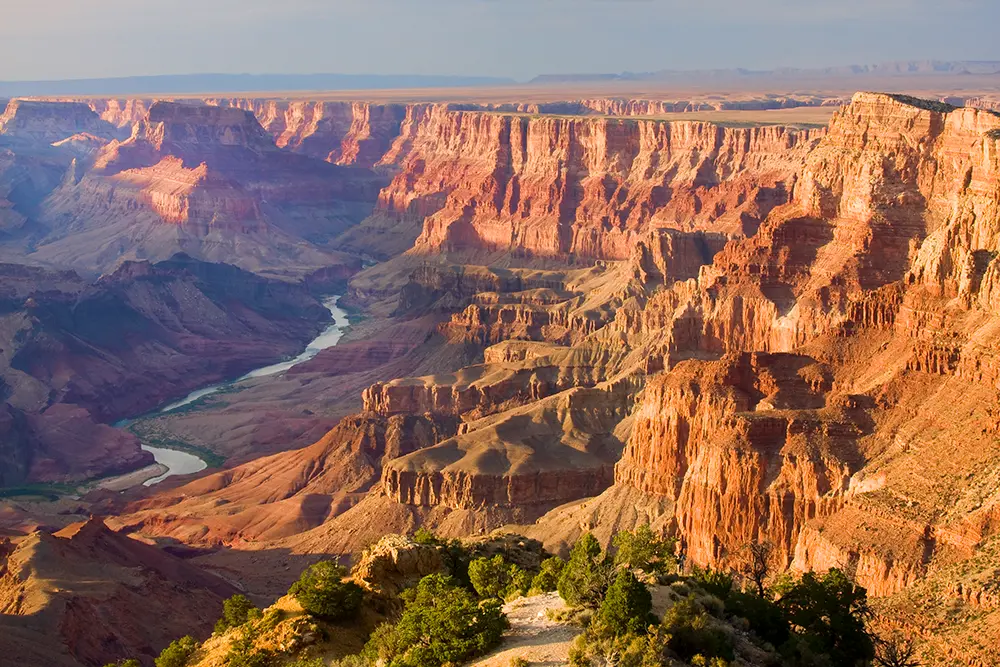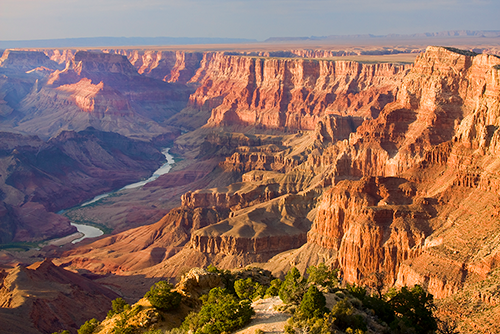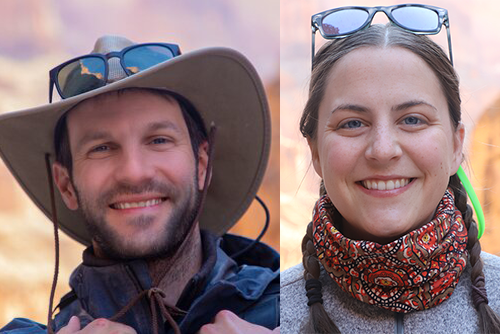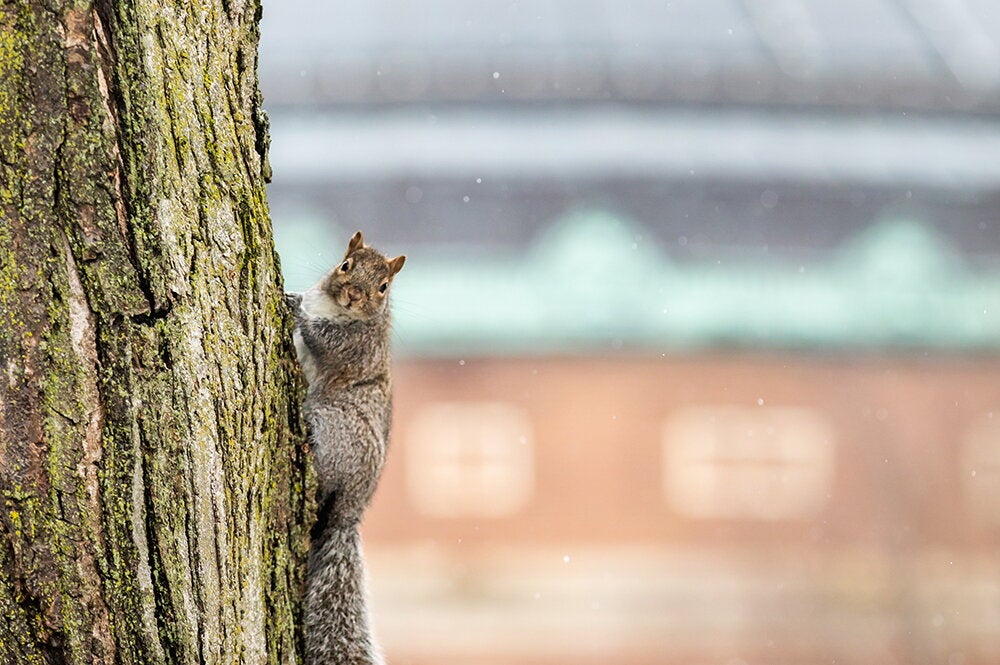

On a recent 11-day trip through the Grand Canyon, geologists gathered evidence in hope that it would allow them to peer billions of years into the past. Using a relatively new technique, they were able to estimate the age of a mysterious section of the national landmark.
The Great Unconformity is a section of the Grand Canyon where two layers of rock with as much as a 1.3-billion-year age difference overlap. Researchers have long asked: What explains the missing layers of time in between? Olivia Thurston (PhD, ’21, geology), a former graduate student at UIUC who now works as a post-doctoral researcher at Indiana University, led the research project. She said this gap in time has been the source of debate for many years.
Now, with the team’s research results published in the journal Geology, geologists are closer to understanding what happened millions of years ago in what’s now the eastern Grand Canyon.

“I was aware that they had tried different techniques to date erosion surfaces in Grand Canyon before,” Thurston said. “When (University of New Mexico professor) Dr. Karl Karlstrom came to visit, he showed us his work, and I said, ‘Why haven't we used zircon-helium yet? We're debating about these ages of erosion, but we haven't used all the techniques available.’”
Karlstrom, a professor at the University of New Mexico and co-author on the paper, has been a key figure in research in the Grand Canyon for the last several decades. He also led the trip through the Grand Canyon, where Thurston and about 30 other scientists gathered to study the canyon, each with their own research in mind.
Thurston went there to test the reach of zircon-helium thermochronology. The technique looks at the ratio of helium to uranium inside the mineral zircon to determine its age. Zircon is a mineral commonly found in microscopic form throughout the canyon, Thurston said. She was made aware of the technique by her former graduate advisor, William Guenthner, a professor of geology at the University of Illinois and another co-author on the paper. Guenthner has spearheaded efforts to expand the potential of the technique for deep geologic time.
“You measure the uranium and you measure the helium [inside the zircon] and that gives you a date, because you know how fast the uranium decays to helium,” Guenthner said, “What Olivia has demonstrated is that this particular technique can both describe the really old event, which is erosion to create the Great Unconformity in the canyon and she can record the—relatively speaking—young event which is the actual carving of the canyon itself.”
The process is far from simple. Despite being crucial to the research, uranium complicates the calculations. One reason zircon is used is for its resistance to physical and chemical weathering, but its crystalline structure is damaged by the radiation emitted from uranium. This radiation damage affects how helium moves around within the crystal.
“If the crystal is hot enough, helium can actively diffuse out of the crystal because it’s not actually part of the crystalline structure,” Thurston said, “Once we get low temperatures, about 200 degrees Celsius, we start to retain the helium. And that's when we can use the uranium, helium parent-daughter ratio to get a date.”
This means when the zircon is deposited farther below the earth’s surface, where temperatures are higher, helium is released quickly, Thurston said. As the minerals begin the process of exhumation, being lifted to the surface, they cool and the helium is trapped.
By looking at how much helium is retained within the zircon’s crystalline structure, Thurston and her team can determine when the cooling process began and when the rock reached the surface where it remains to this day.
According to Thurston’s research, the exhumation and erosion of the Great Unconformity began around 1.25-1.35 billion years ago. This timeframe predates the break-up of the supercontinent Rodinia (550-800 million years ago), an event that some theorized created the unconformity.
However, their findings point to the Great Unconformity being “broadly related to” the assembly of Rodinia, which occurred approximately 900 million to 1.3 billion years ago. Still “a broader deep-time thermochronologic transect across Laurentia is needed to fully understand the multiple mechanisms” that created the Great Unconformity, according to Thurston.
“I think what's exciting for the general public about this study, is to think about how unimportant we are in geologic time,” Thurston said. “Something happened 1.8 billion years ago and we still see it on Earth today in the form of this canyon. That's a very powerful and humbling perspective to take. I think it provides a little bit of perspective on the importance or the longevity of humans relative to the Earth and everything else that's happening.”


